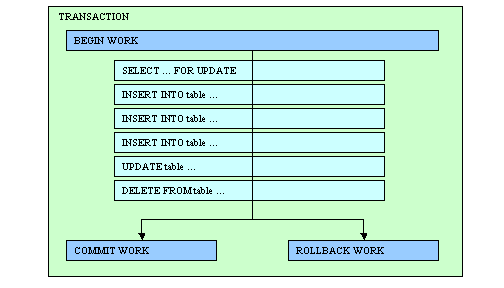3
2012
What is a Transactional Database?
Whenever a user stores or manages data in the database, the user is making a “database transaction”. The database transaction refers to the work done within a database management system or less likely against a database. The transaction in the database works independently with other transactions, so users can ensure that all data are coherent, accessible and secure.
The significance of making transactions with a database is to provide a more cohesive and coherent transferring of data as well as keeping the data secure from erroneous circumstances like system failure. With the use of database transaction, particularly data, which require frequent manipulation, will easily be accessed. To understand database transaction more clearly, users just need to remember these terms – Atomic, Coherent, Isolated and Durable (ACID). These are the properties of database transaction. Thus, database transaction definitely follows the “do or die” concept. Transactions will either work, or it will have no effect to the database. Moreover, the database should also be isolated, and completed transactions should be stored in a safe system.

Purpose of Database Transactions
The use of a database, especially in businesses, implies credibility and integrity of data stored and manipulated. With the use of a database transaction, data integrity will be maintained and each data transaction will have a consistent state. This means that data processing will work independently from other databases. For instance, you are working in a banking firm, and a transaction was made. A check was issued to purchase $500 worth of clothes. This check serves as a credit. Thus, the accountant would have to record a debit of $500 as well as a credit of $500.
Advantages and Disadvantages of Database Transactions
When using the database transaction, organization of data will be simplified. There will only be fewer tables and columns used than in a traditional database. Users will also have easy access to data because users can only use insert. Data within the database will never be altered, so there will never be any incidence of system failure. Moreover, effective input of dates of transactions will surely aid in easy access to statement of accounts.
Flexibility is also an advantage when using a database transaction. Users can definitely modify some of the important data without tampering other isolated data. Users can change the rules and other interface without changing the structure of the database. By using the database transaction, users will have better history retrieval. Data are secured in a constraint environment. Thus, data will definitely be incorruptible. Lastly, you can effectively store your important data because of the consistent information available. Archiving will definitely be convenient for database transaction users.
Although database transactions definitely bring great benefits to users, it also has its drawbacks. Because all data are normalized and have an “insert only” feature, most data become less readable. Most users will have a difficult time looking for their data and will just end up confused. Furthermore, users will have less time or less opportunity to change the data within the database. That’s why, when using the database transaction, users should make sure that every data input should be accurate and credible.
Further readings
Advertisements
Recent Posts
- What is a Disaster Recovery Data Center
- What is a Relational Database?
- What is a Flat File Database?
- What is a DSN or Database Source Name?
- What is a Disaster Recovery Plan?
- What is an Open Source Database?
- What is Disaster Recovery?
- What is a Database Cluster?
- What are Database Servers?
- What are Database Forms?
Random Posts
- What is Database Administration and Automation?
- What is a DSN or Database Source Name?
- What is a MySQL Database?
- What is a BLOB or Binary Large Object?
- Data Integration Solutions
- What is an Oracle Database?
- What is ETL or Extract, Transform, and Load?
- What is Database Normalization?
- What is ODBC or Open Data Base Connectivity?
- What is an Online Database?

 An article by
An article by 




